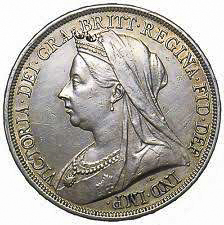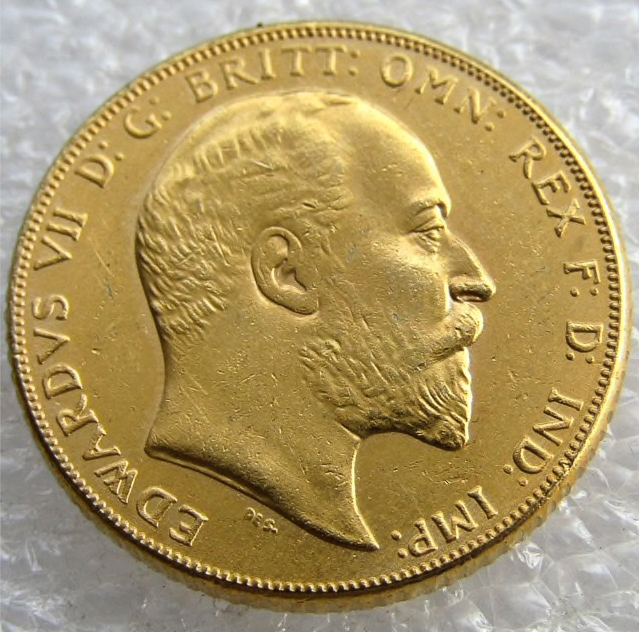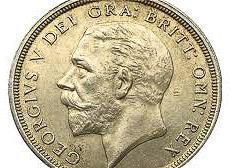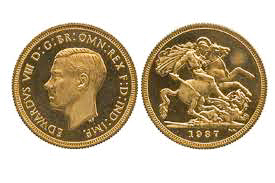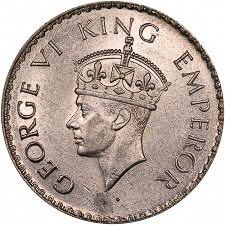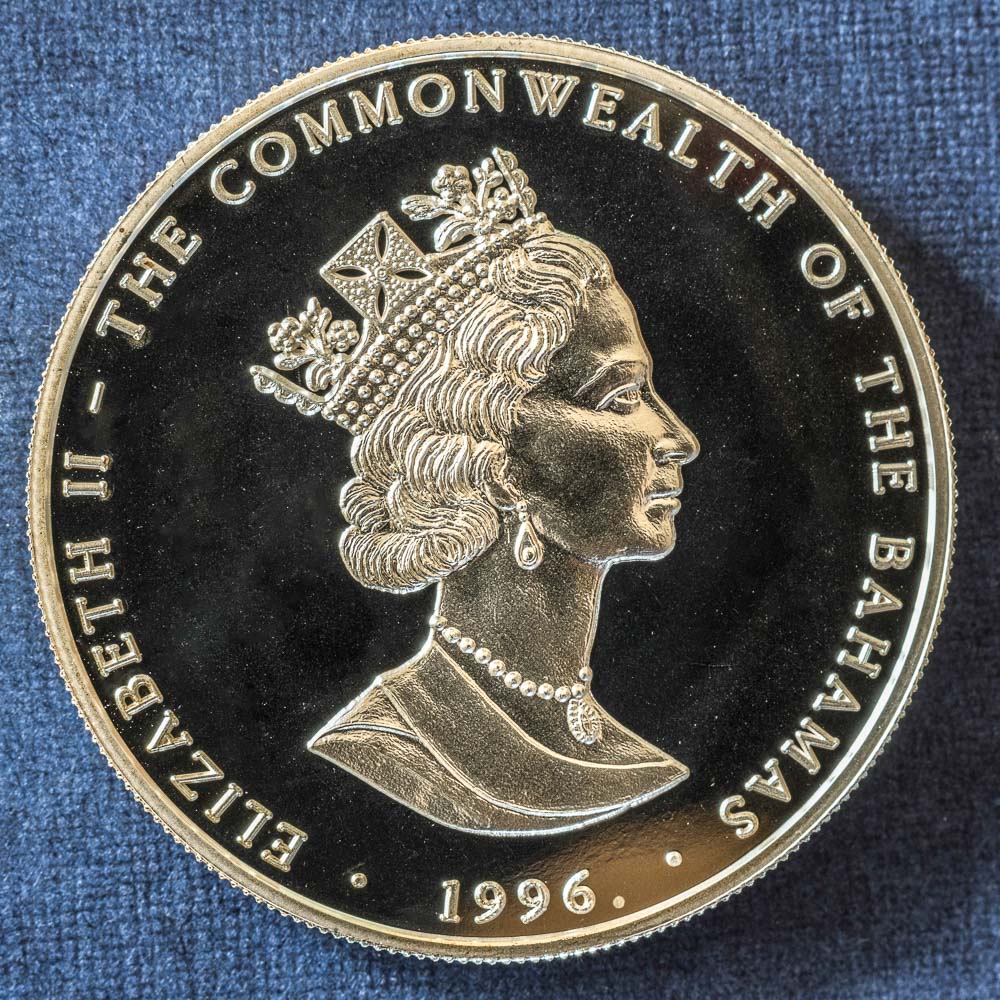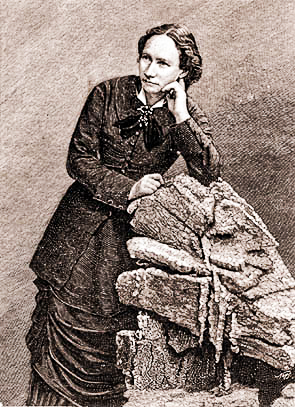There are many iconic World War II battles etched in our minds. We are reminded of the men and women who either survived or sacrificed themselves during these horrific events. Battles such as the Invasion of Normandy (i.e., D-Day), Battle of the Bulge, or Operation Market Garden have been memorialized in many films and documentaries and are celebrated each year with services commemorating the Allied participants.
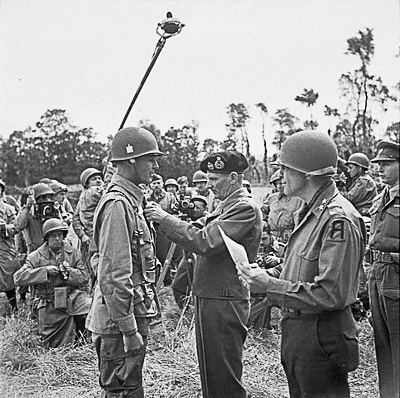
However, for each of these battles, there are thousands of other battles, skirmishes, aerial confrontations, or encounters with the enemy that have not been well-documented or even remembered. In other words, they have been relegated to the back pages of history and in many cases, lost to history as the participants leave us. I suspect many of you (including myself) and your friends have relatives who fought in the war and participated in deadly battles, but they are never mentioned in the history books.
Today’s topic is about one of those battles that was extremely important to the Allied efforts in their push toward Germany after the successful invasion of the Normandy beaches six months earlier. Unfortunately, most people are unaware of the Colmar Pocket and the ensuing battle between 20 January and 9 February 1945. The primary focus of historical attention during this time has always been on the Battle of the Bulge (ending on 25 January 1945) resulting in a relative neglect of the Colmar Pocket battle, its significance, and sacrifices.
The Colmar Pocket was an area of significant German resistance and represented one of the “gateways” over the Rhine River into Germany. During those twenty days, Allied casualties and losses totaled more than 21,000 while German losses exceeded 38,000. There were many heroic efforts including four recipients of the Medal of Honor (e.g., Audie Murphy). The Colmar Pocket survivors became part of the combined Allied forces that fought their way into Germany ending with the German surrender three months later.
We have decided to stop using Amazon to sell our books. The Kindle versions will still be available on Amazon. However, to purchase an autographed hard copy of our books, please contact us directly at stewross55@gmail.com.
Did You Know?
Did you know that the last surviving fighter pilot of the Battle of Britain recently passed away? Group Captain (Gp Capt) John “Paddy” Hemingway was 105 when he died in Dublin on 17 March 2025. Gp Capt Hemingway joined the RAF in 1938 and in addition to the Battle of Britain, he flew missions during the Battle of France, Battle of Dunkirk, the Allied invasion of Italy, and the invasion of Normandy (i.e., D-Day).

Between 10 July and 31 October 1940, nearly 3,000 pilots and 1,963 aircraft successfully defended England from a vastly superior German Luftwaffe. About 1,542 pilots were killed, 422 wounded, and 1,744 aircraft were lost during the three and a half months commonly known as the Battle of Britain.
Paddy was shot down four times during the war. One time, he had to escape out of an aircraft while on his way to receive his Distinguished Flying Cross from King George VI. Twice he parachuted into the sea after dogfights crippled his single-seat Hurricane aircraft. Assigned to No. 85 Squadron RAF in June 1940, Paddy and his fellow pilots fought the Luftwaffe until early September when the squadron was reassigned to Yorkshire. For the remainder of the war, the mission of 85 Squadron was to patrol the skies at night searching for incoming enemy aircraft.
Gp Capt Hemingway retired from the RAF in September 1969. Paddy was the last surviving member of the exclusive club called “The Few.” On 20 August 1940, Winston Churchill gave a speech about the ongoing air battle to the House of Commons wherein he stated, “Never in the field of human conflict was so much owed by so many to so few.” The speech became known as “The Few” to describe the RAF pilots. Paddy and his fellow pilots were automatically enrolled in the club.
Paddy’s biggest regret in life was losing his friends during the war, and particularly the Battle of Britain. Shortly after Paddy’s death, the RAF issued a statement stating, “Mr. Hemingway’s passing marked the end of an era and a poignant reminder of the sacrifices made by those who fought for freedom during World War II.”
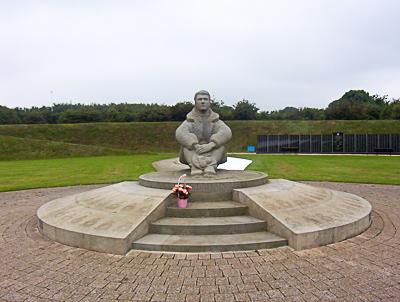
As we remember men like John Hemingway and Stanley Booker, we must also never forget about the millions of men and women who served their countries to fight for freedom.
“No nation has friends, only interests”
⏤ Charles de Gaulle
We tend to focus on Winston Churchill’s quotations but not so much on Gen. de Gaulle’s famous words. This is one of my favorite quotes from the general. I thought it might be rather timely considering contemporary world events.
Alsace-Lorraine
Alsace-Lorraine was once a territory of the German Empire. It has gone back and forth between France and Germany since its establishment in 1871. The Alsatian part lies on the west bank of the Rhine River (Germany is on the other side) and east of the Vosges Mountains. Lorraine is in the upper Moselle valley and north of the Vosges. Today, France claims the territory with Strasbourg as the territory’s most famous city.

At the start of World War I in 1914, one of France’s top goals was to recover the two lost provinces from Germany. (Germany took possession in May 1871 after the Franco-Prussian War.) This was accomplished with the defeat of Germany and Alsace-Lorraine was annexed to the French Third Republic. When Germany defeated France in June 1940 and took control of the country, citizens of the Alsatian and Lorraine territories became eligible to be drafted into the German military. By 1942, the Nazi government required people living in these territories to become German citizens and speaking French was prohibited.
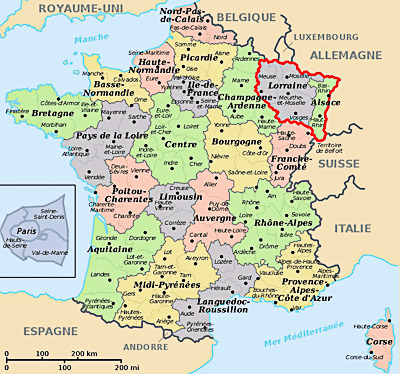
During the four years of German occupation, the Alsace-Lorraine area, including the city of Colmar, was very strategic for the Germans. It was essentially the last line of defense along the Rhine and German border. As the German bulge collapsed by late January 1945, this secondary “bulge” or Colmar Pocket was to be defended to the last German soldier.
The Colmar Pocket
The Colmar Pocket was an area in central Alsace. The pocket was created in November and December 1944 when the U.S. 6th Army Group (US6AG) liberated north and south Alsace and eastern Lorraine. The German 19th Army subsequently held their ground in central Alsace preventing the Allies from advancing to the German border. Part of the reason for the delay in clearing central Alsace was a lack of strategic Allied reserves. Gen. Eisenhower was throwing as many resources as he could into fighting the Germans in the Ardennes (i.e., the Battle of the Bulge).
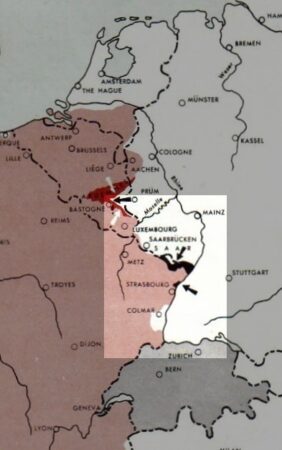
Battle Participants
The primary Allied forces included French infantry and armored divisions (several of which were Moroccan) while the Americans contributed three infantry divisions and an armored division.
The fighting was led by the US6AG and its commander, Gen. Jacob Devers (1887−1979). Devers reported directly to Gen. Eisenhower at SHAEF headquarters. Directly reporting to Devers was Lt. Gen. Alexander Patch (1889−1945) and his Seventh Army as well as the French First Army led by Marshal Jean de Lattre de Tassigny (1889−1952).

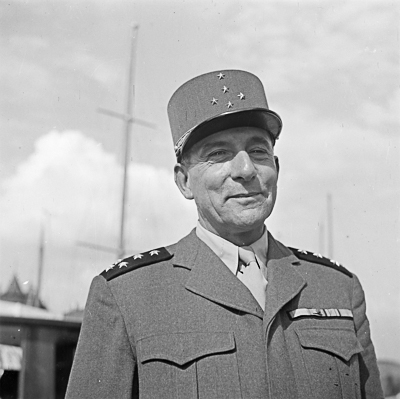
The Seventh Army included Maj. Gen. Wade Haislip’s (1889−1971) XV Corps and its famous 3rd Infantry Division along with the XXI Corps led by Maj. Gen. Frank Milburn (1892−1962). The XXI Corps consisted of three divisions including the French 2nd Armored Division commanded by Gen. Philippe Leclerc (1902−1947) and Maj. Gen Maxwell Taylor’s (1901−1987) 101st Airborne Division (“The Screaming Eagles”).
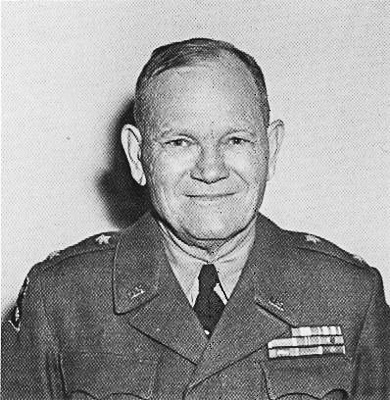
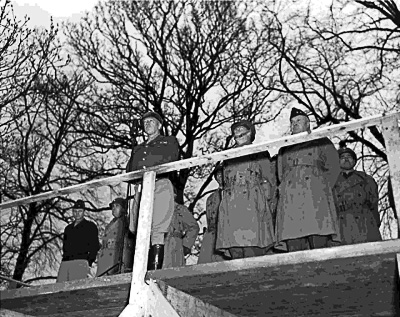
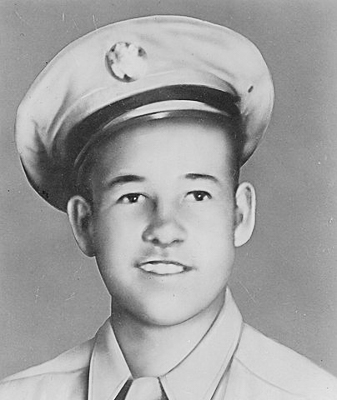
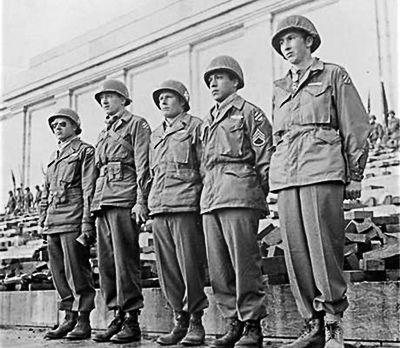
The US6AG was created in July 1944 and its initial mission was to supervise and coordinate the combined French and American forces in the invasion of Southern France known as “Operation Dragoon.” Originally planned to coincide with the invasion of Normandy on 6 June 1944, a lack of resources forced a delay until 15 August. A successful invasion of Southern France would mean vital ports, including Marseille, would become available to assist in supplying the Allied armies from the Normandy beach heads, the eventual breakout, and then the march to Germany. It would also open a second front requiring the Germans to divert resources away from other areas. Dragoon was extremely successful, and German forces were quickly defeated.
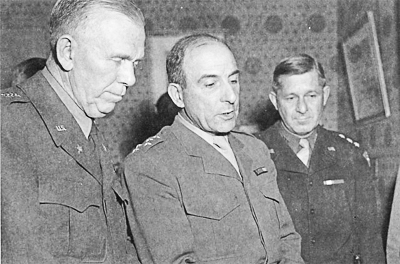
Clearing the German Army
After Dragoon, Devers and his army were operating under Gen. Eisenhower’s orders to clear the Germans from the west bank of the Rhine. The mission was going fine through November 1944 as Leclerc captured Strasbourg on 23 November and Devers defeated the German Nineteenth Army leaving only two of its divisions intact. These two German divisions formed the defense of the Colmar Pocket.
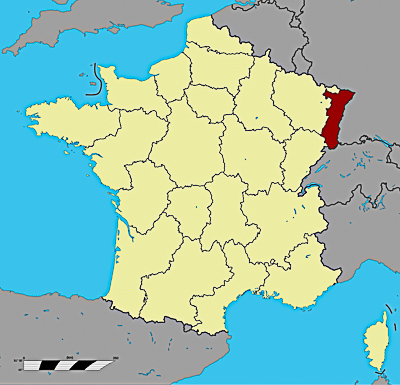

Devers and his generals were planning to cross the Rhine into Germany when Gen. Eisenhower showed up on 24 November. Eisenhower refused to allow Devers to cross the Rhine; instead ordering him to clear the remaining German troops on the western side of the Rhine (i.e., Alsace-Lorraine). However, Eisenhower delayed those orders when on 15 December, Hitler ordered the Ardennes Offensive, commonly known as the Battle of the Bulge.
Operation Nordwind
By late December, the German offensive in the Ardennes was running out of steam and Hitler ordered a final push to support the Ardennes offensive. It was called Operation Nordwind, or “Operation Northwind” and it called for breaking through Dever’s army in the Vosges, the Alsatian Plain, and recapturing Strasbourg.
On 31 December, two German armies (one commanded by Reichsführer-SS Heinrich Himmler) attacked the Seventh Army while the Luftwaffe sent a thousand aircraft to cripple Allied air forces. The Germans threw Panzer divisions, Wehrmacht divisions (including those defending the Colmar area), and Waffen-SS troops up against the Seventh Army and by mid-January 1945, the U.S. VI Corps was fighting the enemy on three sides. The fighting was so fierce that Gen. Eisenhower feared the Seventh Army would be destroyed and he ordered battle-weary troops from the Ardennes to reinforce the Seventh Army, but their arrival was delayed. Two weeks of heavy fighting ensued but on 25 January, the U.S. 222nd Infantry Regiment stopped the German advance. (On the same day, the reinforcements showed up.)
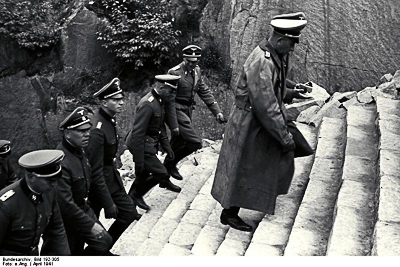
At this point, Strasbourg was liberated and Dever’s army held two key territories west of the Rhine. However, the remaining divisions of the German Nineteenth Army commanded by General der Infanterie Siegfried Rasp (1898−1968) held The Colmar Pocket in the center of Alsace-Lorraine.

The Battle of the Colmar Pocket
After the failure of the German Operation Northwind, Devers was ordered to collapse the Colmar Pocket. As we know from the Battle of the Bulge, the 1944/45 winter was very severe. The Colmar Pocket was situated in the Alsatian Plain, a very flat terrain with virtually no cover except for the occasional small, wooded areas. The plain is also a drainage basin with many streams and drainage canals making it difficult for vehicles to cross. The only real cover for German defenders were the small villages dotting the landscape.
French and Moroccan divisions first attacked the south flank of the pocket on 20 January 1945 during a snowstorm. As the weather worsened and the Germans began their counterattacks, the French attack slowed down. On the northern side of the pocket, the attacking units were the U.S. 3rd Division and the French 1st Infantry Marching Division.
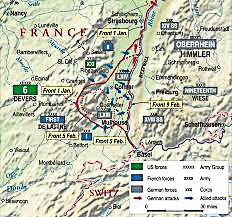
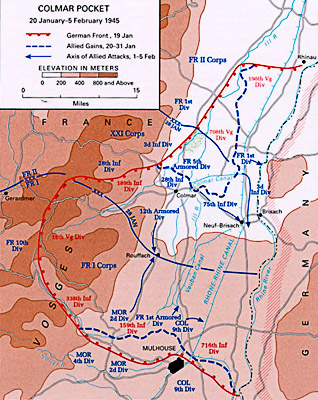
Over the next ten days, the fighting was fierce. Allied troops sought cover wherever they could. Many times, this was a retreat into nearby woods (e.g., Audie Murphy ordering his men into the Riedwihr Woods). Three key objectives were subsequently achieved: reaching the Colmar Canal, capturing the town of Jebsheim, and reaching the Rhine. By 1 February, all three objectives had been fulfilled.

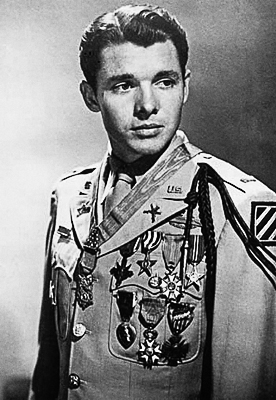
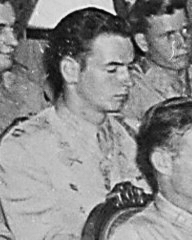
By now, the German defenses were collapsing. Hitler authorized partial retreats but under no circumstances was anyone allowed to retreat over the Rhine. Due to confusion associated with the withdrawals, German forces were in disarray. Hitler was forced to abandon the headquarters (Heeresgruppe Oberrhein) and place his troops under the Waffen-SS led by SS-Obergruppenführer Paul Hausser (1880−1972). During the first week in February, Allied forces liberated key villages and towns (including Colmar on 3 February), split the Colmar Pocket, and reached the Rhône-Rhine Canal.
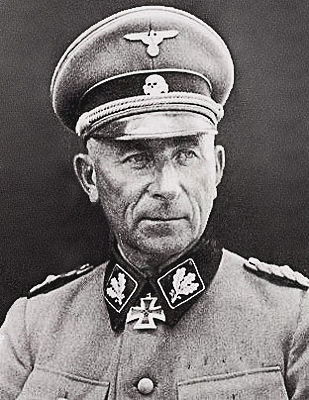
The Collapse of the Colmar Pocket
By 4 February, German resistance was limited. Allied forces throughout the pocket were linking up, heavy artillery and air strikes were being used against diminishing pockets of German troops, and unobstructed paths to the Rhine were being opened.
On 9 February, the last German defenders surrendered on the west bank of the Rhine. Devers had accomplished his mission to eliminate the Colmar Pocket, and he could now focus the US6AG efforts on entering Germany and writing the last chapter of the war in the European Theater.
For the fourth time since 1871, Strasbourg and Alsace-Lorraine changed hands between France and Germany.

Memorial Museum of the Liberation of the Colmar Pocket
The Musée Mémorial des Combats de la Poche de Colmar is located in the small village of Turckheim (25 rue du Conseil). The museum is full of authentic artefacts and tells the story of the bitter cold fighting for the Colmar Pocket. Click here to visit the web-site.
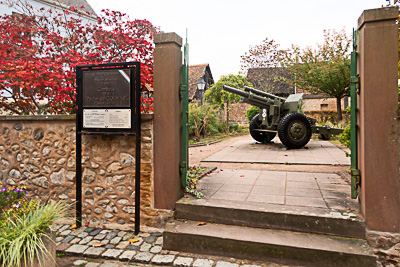
Next Blog: “The Pianist & Wehrmacht Captain”
Correspondence and Commentary Policy
We welcome everyone to contact us either directly or through the individual blogs. Sandy and I review every piece of correspondence before it is approved to be published on the blog site. Our policy is to accept and publish comments that do not project hate, political, religious stances, or an attempt to solicit business (yeah, believe it or not, we do get that kind of stuff). Like many bloggers, we receive quite a bit of what is considered “Spam.” Those e-mails are immediately rejected without discussion.
Our blogs are written to inform our readers about history. We want to ensure discussions are kept within the boundary of historical facts and context without personal bias or prejudice.
We average about one e-mail every two days from our readers. We appreciate all communication because in many cases, it has led to friendships around the world.
★ Read and Learn More About Today’s Topic ★
Clarke, Jeffrey J. and Robert Ross Smith. Riviera to the Rhine (United States Army in World War II: The European Theater of Operatons). Florence, AL: Whitman Pub, LLC, 2012. Originally published by the Center of Military History, United States Army, 1993.
Collier, Peter. Medal of Honor: Portraits of Valor Beyond the Call of Duty. New York: Artisan, 2011.
De Lattre de Tassigny, Jean. Translated by Malcom Barnes. The History of the French First Army. London: Routledge Library Editions (2021). Originally published by George Allen and Unwin, 1952.
Memorial Museum of the Liberation of the Colmar Pocket. Click here to visit the museum web-site.
Murphy, Audie. To Hell and Back. New York: Holt Paperbacks, 2002. Originally published by Henry Holt Co., 1949.
Prefer, Nathan N. Eisenhower’s Thorn on the Rhine: The Battles for the Colmar Pocket. Philadelphia: Casemate, 2015.
Rosenberg, Aaron (producer). To Hell and Back. Universal Pictures, 17 August 1955.
Saltzman, Harry and Benjamin Fisz (producers). Battle of Britain. Spitfire Productions, 15 September 1969.
Smith, David A. The Price of Valor: The Life of Audie Murphy, America’s Most Decorated Hero of World War II. Washington D.C.: Regnery History, 2015.
Thalmann, Hugues-Emmanuel. The Savage Battle of the Colmar Pocket, Winter 1944-1945. Saint-Cyr-sur-Loire: Editions Sutton, 2013.
Disclaimer:
There may be a chance that after we publish this particular blog, the video links associated with the blog are no longer accessible. We have no control over this. Many times, whoever posts the video has done so without the consent of the video’s owner. In some cases, it is likely that the content is deemed unsuitable by YouTube. We apologize if you have tried to access the link and you don’t get the expected results. Same goes for internet links.
What’s New With Sandy and Stew?
Welcome back to our blogs. We took a hiatus due to a crushing load of issues facing us over the past six months. Now that we are kind of digging out, I thought we would publish our blog that was supposed to go out last year. It is a topic that came about as a result of our September 2024 river cruise through France and Germany. We took an excursion that focused on the battle for the Colmar Pocket.
Sandy and I have decided to move back to Nashville. We moved to SW Florida about nine years ago for the primary purpose of being close to my 94-year-old father who lived in Venice by himself. Well, he passed away a year ago and now there really is no reason to stay. We enjoyed Nashville very much for the ten years we lived there and so it was a no-brainer decision to return. We’re building a house in Franklin and hope to move in sometime this fall. In the meantime, lots of traveling on our schedule. Hopefully, we can turn some of our experiences into blogs, just like we did with this current blog.
Thank you to all of you who subscribe to our bi-weekly blogs. It seems there isn’t a day that goes by where we don’t increase our readership. Please let your history buff friends and family members know about our blog site and blogs.
Someone Is Commenting On Our Blogs
We have had some very interesting correspondence since our last blog. One stands out.
We would like to thank Capt. Hugh S. for reaching out to us on 12 March regarding our comments about Stanley Booker’s passing. Capt. Hugh is the assistant equerry to King Charles III. As a result, His Majesty sent a wonderful letter of condolences to Stan’s daughter, Pat V. It was one of the most thoughtful and beautifully written letter I’ve ever read. Needless-to-say, it was quite an emotional moment for Pat. All of us are very appreciative of Capt. Hugh’s interest and effort to honor one of the millions of heroes of World War II. Like Gp Capt. Hemingway (refer to above “Did You Know?”), we are losing so many of the men and women who fought to keep our world free.
If there is a topic you’d like to see a blog written about, please don’t hesitate to contact me. I love hearing from you so keep those comments coming.
Share This:
Follow Stew:
Find Stew’s books on Amazon and Apple Books.
Please contact Stew directly for purchase of books, Kindle available on Amazon. Stew.ross@Yooperpublications.com or Contact Stew on the Home Page.
Shepherd.com is like wandering the aisles of your favorite bookstore.
Do you enjoy reading? Do you have a hard time finding the right book in the genre you enjoy? Well, Ben at Shepherd.com has come up with an amazing way to find that book.
Shepherd highlights an author (like me) and one of their books. The author is required to review five books in the same genre. So, if a reader is interested say in cooking, they can drill down and find specific books about cooking that have been reviewed by authors in that category. Very simple.
If you like to read, I highly recommend you visit Shepherd.com. If you do, please let me know what you think and I will forward Ben any suggestions or comments you might have.
Click here to visit Shepherd’s website.
Click the books to visit Stew’s bookshelf on WWII.
Check out Stew’s bookshelf on the French Revolution.
Please note that we do not and will not take compensation from individuals or companies mentioned or promoted in the blogs.
 Walks Through History
Walks Through History
Copyright © 2025 Stew Ross









